Room 13 knew that a bubble is made up of water, soap and air. Students found out that water molecules stick to each other really tightly and this is called surface tension. Water can barely stretch because it sticks to itself so well. Blowing bubbles in plain water doesn’t work because the water tries to hold itself together. When the water can't stretch any more, the bubble breaks. Adding soap to the water stops the water molecules from sticking together so tightly and allows the solution to stretch. The outside of a bubble is called the skin and is made up of three layers. This is two layers of soap and one layer of water. The water is sandwiched in between the soap layers.
Room 13 tested several detergents to find out which one made the best bubbles. Similarly, the ratio of water to detergent was tested. Students discovered that they needed to add more detergent to our solution. Then other special ingredients, including sugar, glycerin and corn syrup were added to the soap solution. These ingredients were used to make the soap layer thicker so the bubbles were stronger and lasted longer. The bubbles did not pop when they landed on the grass or were caught in the hand. Leaving the solution to sit overnight and for a week also made better bubbles.
After each bubble blowing session successes and failures were discussed enthusiastically. Who knew that chemistry could be so frustrating, disappointing and exciting? The scientific method of observation, question, hypotheses, test, and conclusion was used to determine the next steps.
Shared tips
During the investigation, Room 13 students discovered other things impacted on the success rate. Very windy and sunny days were problematic as the water layer evaporated very quickly and the bubbles popped before they were formed. Bubble wands made with wire were not as successful as those we made with plastic cable ties or pipe cleaners. Technique was crucial in blowing bigger bubbles including position, speed and timing. Big bubble wands were made with lengths of bamboo. Cotton tape was threaded through eyelets at the end of the poles and tied. Having the knots hanging at the bottom added weight so it was easier to open the wand out once it had been dipped in the solution.
The green dishwashing liquid is the best for blowing bubbles.
You dip the wand in the mixture until it is covered and then you blow gently.
If you can see a black band at the top of the bubble it means it’s about to pop!
If you blow a bubble on a hot day it will pop quickly because the water in the bubble will evaporate.
Don’t hold the bubble wand too close to your mouth.
If you want to blow a bubble you need to blow gently.
A cloudy day is the best day for blowing bubbles.
If you go out on a windy day your bubble will pop.
You don’t need to blow bubbles because you can wave the wand in the air.
If you put the bubble wand up high and then go half speed backwards a big bubble will come out.
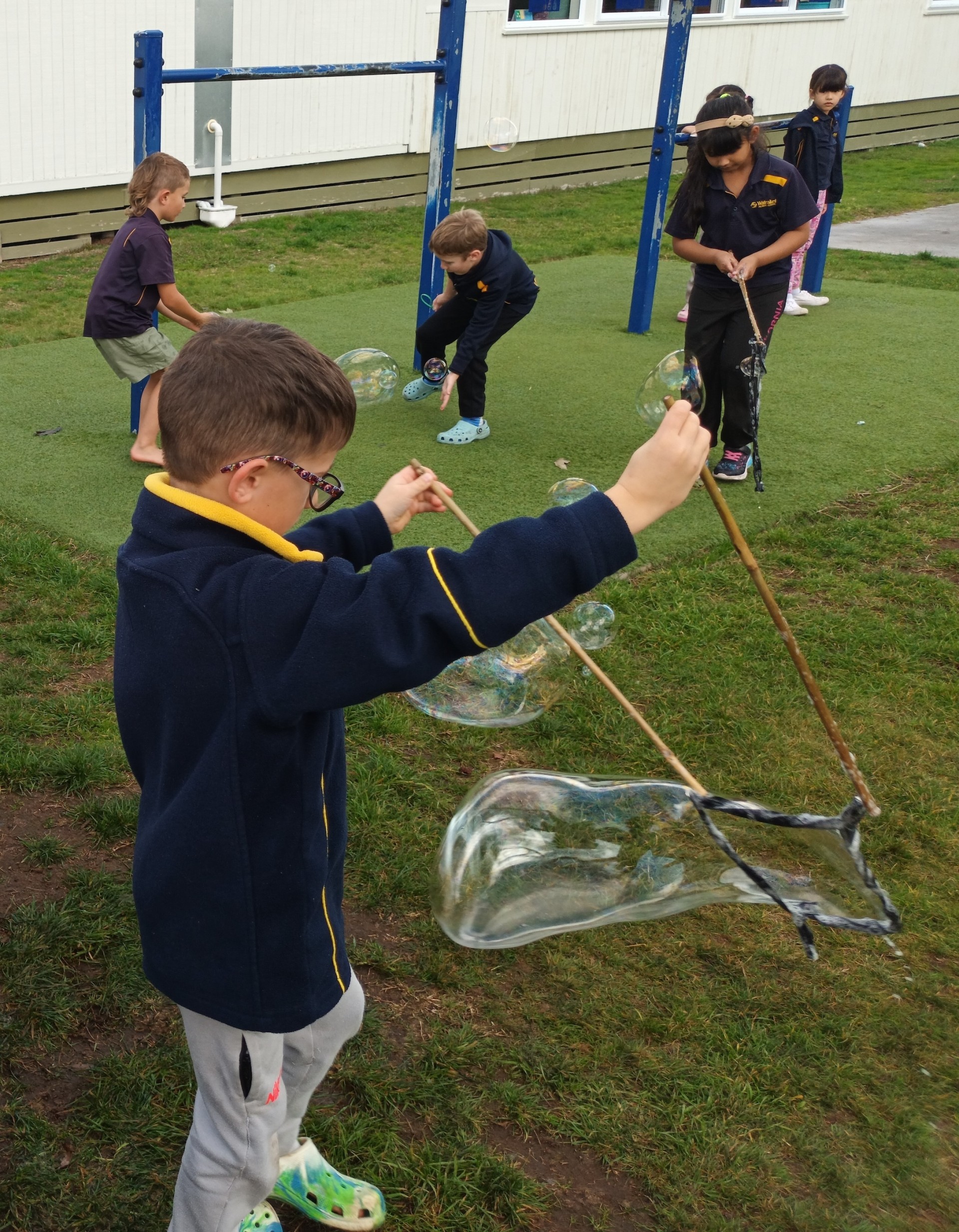
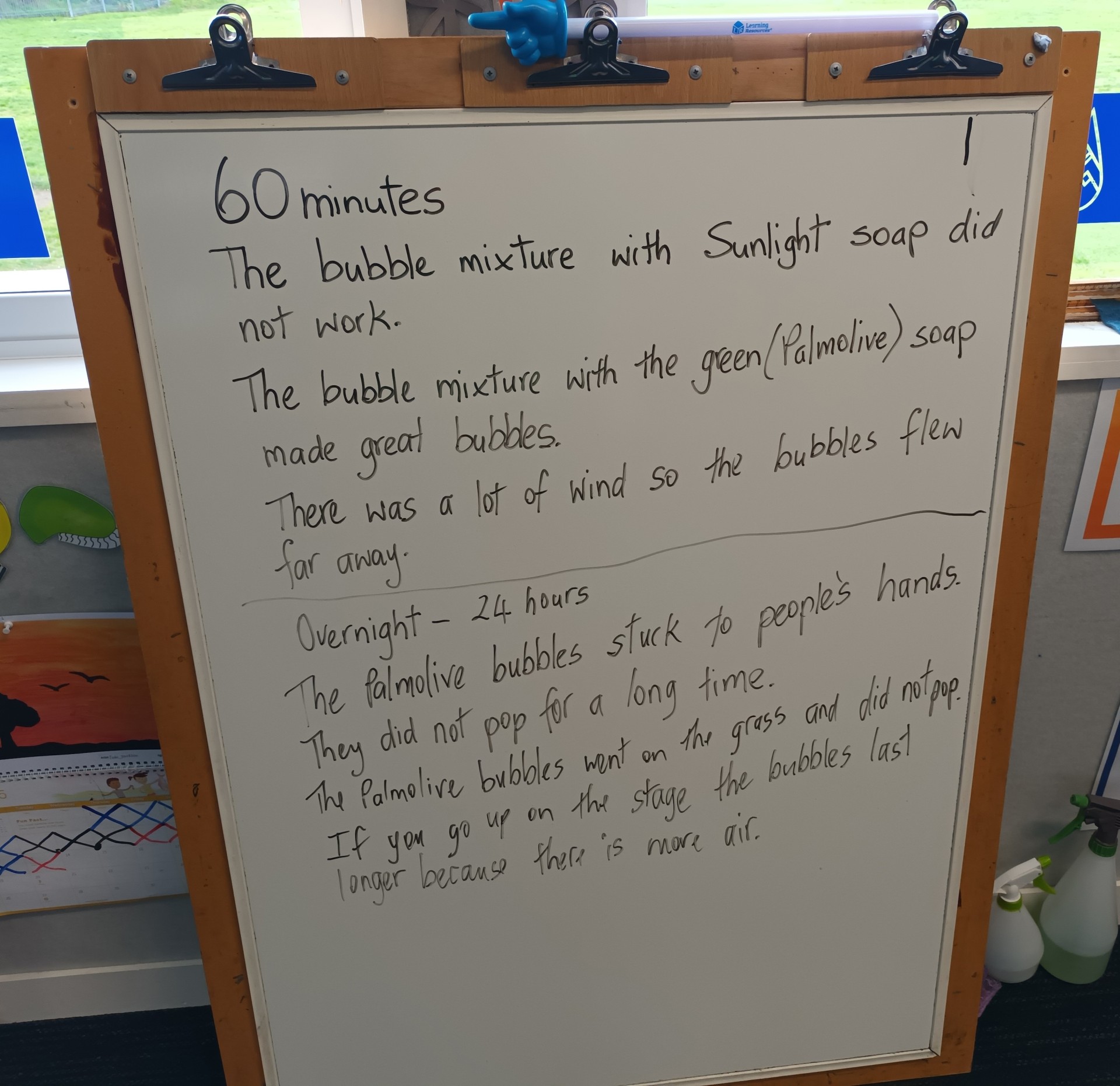
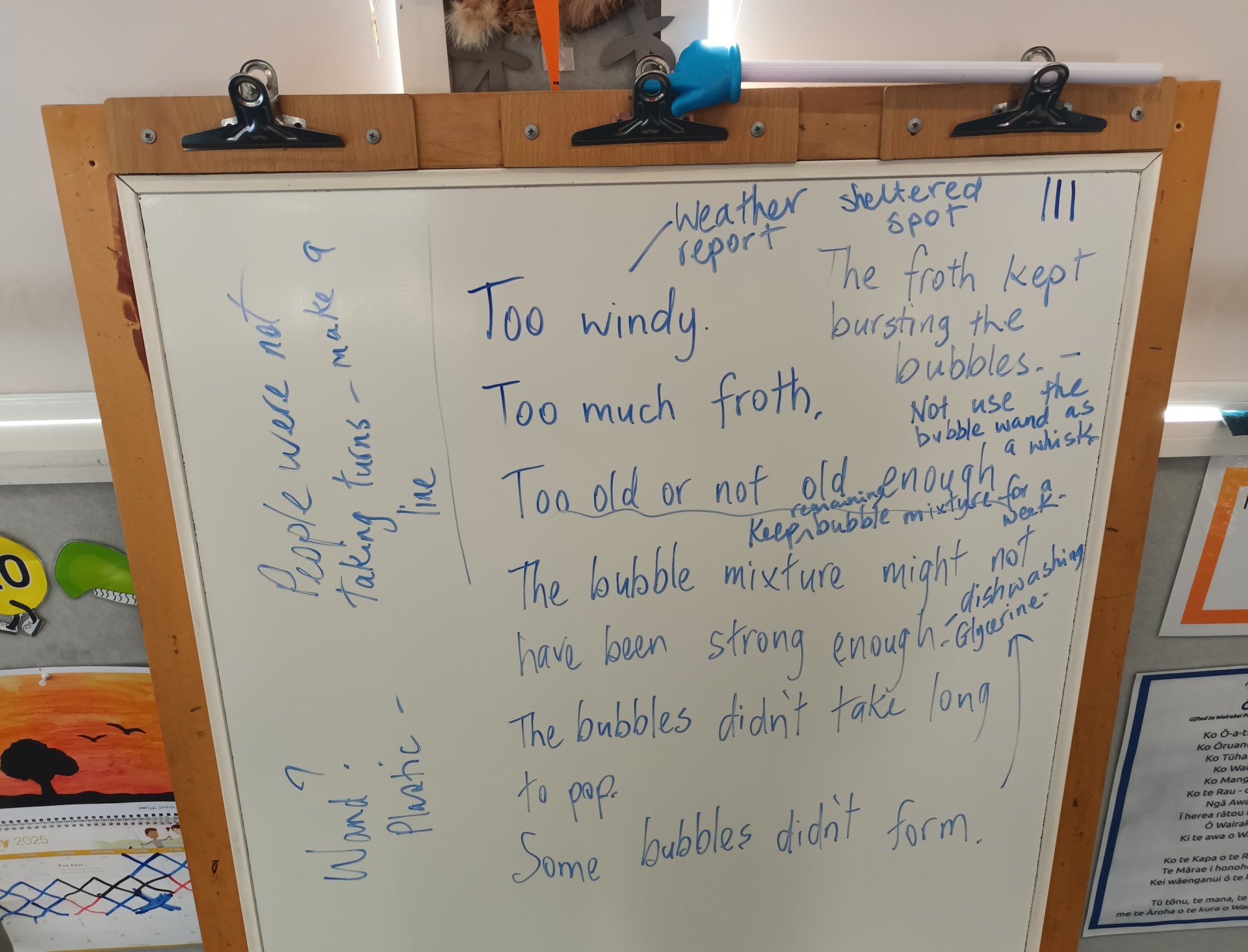
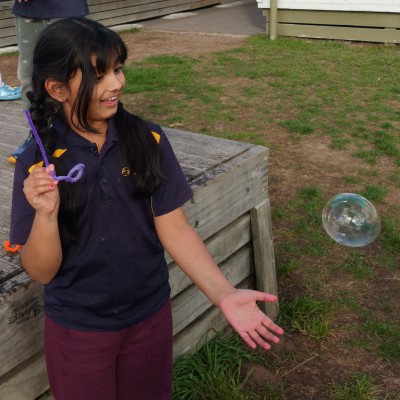
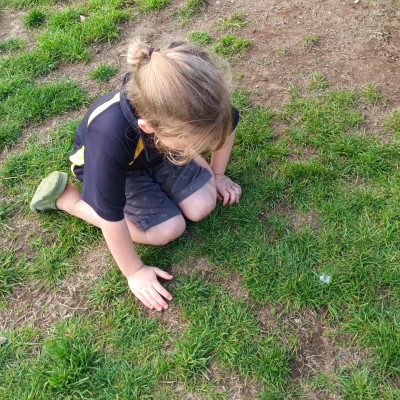
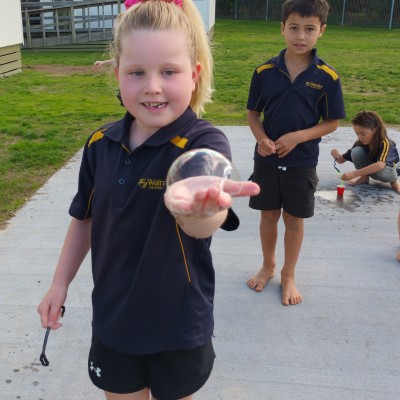

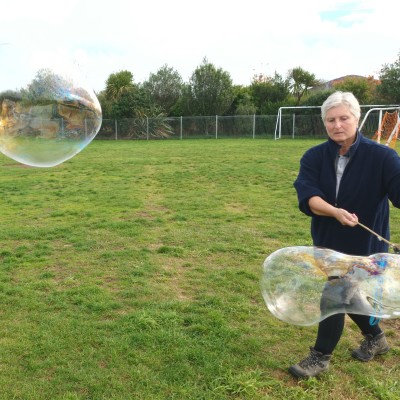
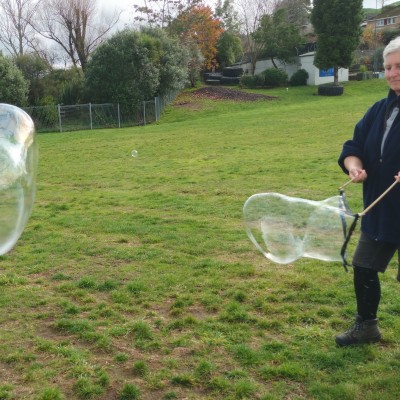
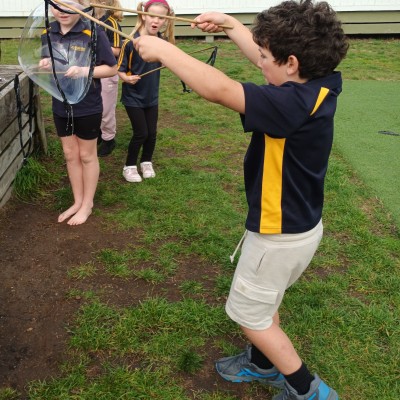

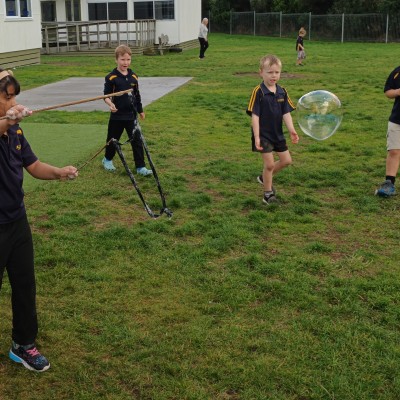
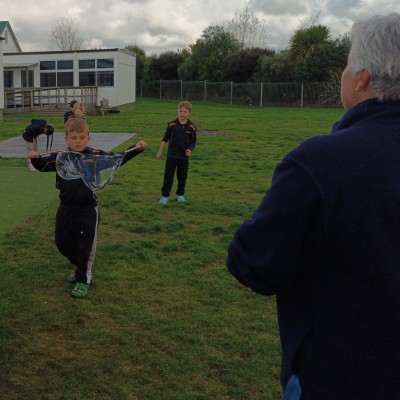
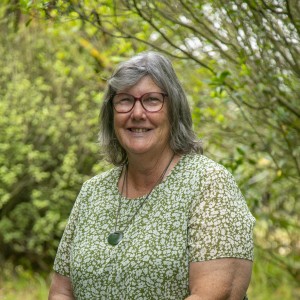

Comments
No one has commented on this post yet.